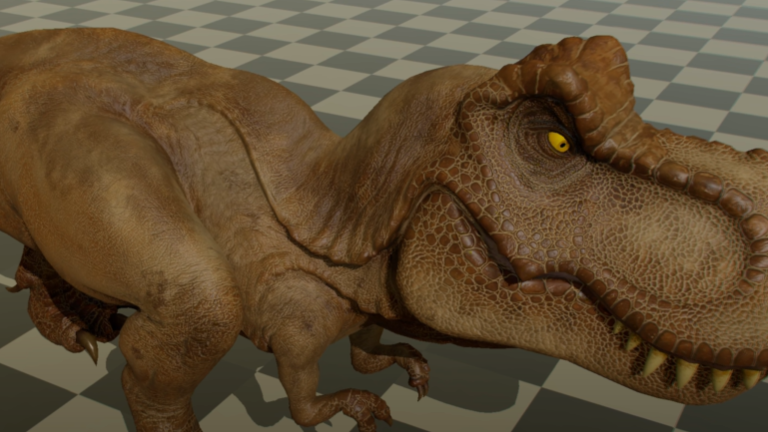The gaming industry is on the cusp of a revolution in graphics technology, primarily due to innovations in artificial intelligence. A pivotal development comes from Nvidia’s Blackwell architecture, which introduces groundbreaking features like neural texture compression (NTC). As game developers strive for more immersive and realistic experiences, NTC promises to significantly alleviate the challenges of VRAM limitations by enabling enhanced texture rendering without overloading hardware. The potential impact of this technology is illustrated by recent demonstrations that highlight its impressive efficiency, paving the way for future game titles.
Understanding Neural Texture Compression
Neural texture compression is a transformative approach that dramatically reduces texture sizes both in memory and on disk, while enhancing the quality of rendered images. Traditional compression methods, which often rely on block-based techniques, have limited capabilities when it comes to producing high-quality textures. In contrast, NTC utilizes small neural networks tailored to specific materials in a scene, allowing for textures to be decompressed with finer detail and less resource usage. This means that developers can deliver richer graphical content without the heavy toll on VRAM that previous methods imposed.
The implementation of NTC is particularly relevant as the demand for high-resolution textures grows. With modern games featuring increasingly larger and more detailed environments, the strain on graphics hardware, particularly VRAM, is unprecedented. NTC addresses this challenge, enabling developers to maintain visual fidelity while reducing the necessary memory footprint. As Nvidia’s Blackwell architecture evolves, NTC is set to become a critical tool in the game development toolkit, enhancing the balance between performance and visual quality.
Collaborative Advances in Graphics Technology
To fully harness the power of neural rendering techniques like NTC, Nvidia has collaborated with tech giants such as Microsoft to innovate in the field of graphics APIs. Their combined effort has produced a new DirectX feature named Cooperative Vectors. This feature allows developers to gain intricate access to the matrix acceleration engines embedded in modern GPUs from Nvidia, Intel, and AMD. Nvidia refers to these components as Tensor Cores, while Intel calls them XMX engines, and AMD identifies them as AI Accelerators. This collaboration not only democratizes access to advanced graphics capabilities but also enhances the overall ecosystem for developers across platforms.
While NTC has yet to be implemented in any commercially available games, developers and enthusiasts are eagerly anticipating its arrival. Recent demonstrations by tech YouTuber Compusemble showcased the potential of NTC in real-world applications. In his videos, Compusemble presented two practical demonstrations of NTC: one using Intel’s technology and the other leveraging Nvidia’s advancements. The results are promising and suggest a future where high-quality graphics are more accessible.
Efficiency and Performance Gains
Performance benchmarks from Compusemble’s demo illustrate the impact of NTC on graphical rendering. For instance, during testing on an RTX 5090 GPU, performance metrics showed that NTC’s use increases pass time from 0.045ms to 0.111ms at 4K resolution, indicating an increase of approximately 2.5 times. Despite this increase, the additional pass time represents a minor fraction of the total frame time, which is a trade-off many developers would find acceptable for improved image quality.
Furthermore, enabling NTC without Cooperative Vectors resulted in a staggering increase in pass time to 5.7 ms, underscoring the necessity of these matrix engines for making NTC practical. This highlights the importance of hardware compatibility and optimization in leveraging new technologies effectively.
Real-World Applications and Future Prospects
Intel’s demonstration features a stunning reconstruction of a walking T-Rex, with NTC effectively enhancing the sharpness and clarity of the textures used. The NTC-enhanced textures show a remarkable visual improvement over traditional block compression techniques, resembling the quality of native, uncompressed textures. Meanwhile, Nvidia’s demonstration underscores the VRAM efficiency of NTC, where uncompressed textures for a flight helmet typically occupy 272 MB. In contrast, block compression reduces this to 98 MB, but NTC brings it down to an impressive 11.37 MB, exemplifying how this technology can significantly optimize resource use.
The slight computational overhead associated with implementing NTC may be balanced out by the considerable resource savings it offers. This dual benefit of enhanced visual fidelity and improved resource management could revolutionize game development, enabling larger and more complex environments without overwhelming hardware capabilities.
Conclusion
Neural texture compression signifies a transformative leap in gaming graphics technology. By reducing the demand for VRAM and improving image quality simultaneously, NTC could redefine the gaming landscape. As developers begin to adopt this cutting-edge technology, gamers can look forward to richer, more immersive experiences that push the boundaries of realism. With collaborative efforts from major industry players and promising early results from demonstrations, the future of gaming graphics is poised for significant enhancement. Developers, armed with tools like NTC, are set to redefine what is possible within the constraints of existing hardware, ultimately leading to a brighter future for the gaming community.

